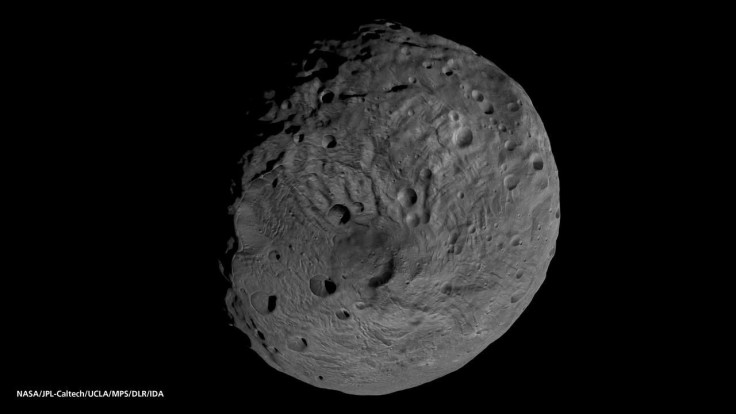Violent Past Of Golf Ball-Like Pallas Asteroid Uncovered By New Study

KEY POINTS
- A study explained why Pallas is covered in impact craters
- Pallas is one of the biggest space rocks in the asteroid belt
- Pallas' strange orbit may have caused its impacts with other asteroids
A new study has revealed why a planet-killer asteroid is covered in impact craters. According to the authors of the study, the massive asteroid’s violent history may have been caused by its unique natural orbit.
The study, which was published in the journal Nature, focused on Pallas, which is one of the largest space rocks in the asteroid belt. With an estimated diameter of 318 miles, scientists believe Pallas is a remnant of a protoplanet.
Pallas is known as the largest asteroid that’s not yet visited by a spacecraft. Since it has not yet been observed up-close, researchers used the Very Large Telescope (VLT) in Chile to collect data on the asteroid.
They discovered that the surface of the massive spherical asteroid is covered in craters that are about 18 to 75 miles wide. Based on computer simulations and data collected by the VLT, the researchers estimated that Pallas three times as many impact craters as Vesta, which is the second-largest known asteroid. Due to the shape of the asteroid and the number of its craters, it looks like a giant golf ball floating in space.
“Pallas is heavily cratered,” the study’s co-author Miroslav Broz told Space.com. “Its surface might resemble a golf ball.”
According to the researchers, most of the craters that collided with Pallas hit the asteroid while traveling sideways. Previous computer simulations revealed that the asteroids that pelted Pallas were traveling at speeds of over 25,000 miles per hour. This figure far exceeds the average speed of impacts in the asteroid belt, which is less than 13,000 miles per hour.
The researchers noted that Pallas’ unusual orbit might have caused impact velocity and direction of the collisions. Through their observations, the researchers discovered that the massive asteroid travels at a tilted and elongated orbit.
The researchers explained that the asteroid’s orbital inclination and eccentricity could be the main reasons why other space rocks are hitting it at high speeds. Since high-speed impacts are more likely to cause craters than slow ones, this could also explain why Pallas appears more pockmarked than other known asteroids such as Ceres and Vesta.
© Copyright IBTimes 2024. All rights reserved.





















